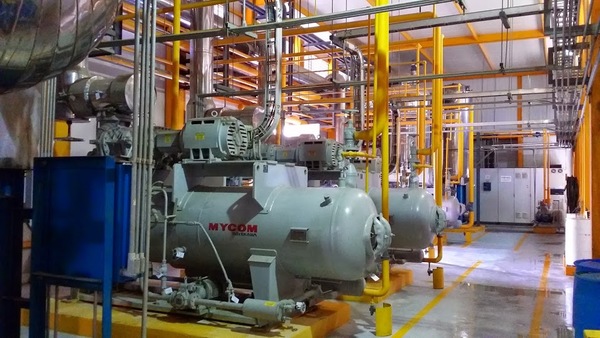7 Takeaways from ANSI/IIAR 7-2019

IIAR’s suite of standards addresses the minimum requirements for ammonia refrigeration systems from design through decommissioning. Standard 7 is unique in tackling the development of operating procedures for these systems. The publication is titled Developing Operating Procedures for Closed-Circuit Ammonia Refrigeration Systems and was most recently updated in 2019. To better understand the function of this document, here are seven noteworthy aspects of the document.
1. Standard 7 is unique.
I am unaware of another ANSI standard that addresses the development of operating procedures for a specific industry. Furthermore, other IIAR standards tend to focus on tangible equipment installation and operation requirements, but Standard 7 is solely concentrated on procedural requirements. In this sense, Standard 7 is very unique.
2. Standard 7 requires the same operating phases as RMP/PSM.
- 4.1 requires operating procedures to be developed to address at least the following activities:
- Initial startup procedures,
- Normal operating procedures,
- Temporary operating procedures,
- Normal shutdown procedures,
- Emergency shutdown procedures,
- Emergency operating procedures, and
- Startup procedures following abnormal shutdown conditions or turnarounds such as power failures or emergency shutdowns
These seven (7) operating phases match the operating phases listed in the RMP and PSM regulations. In other words, Standard 7 aligns with the prescriptive requirements in the RMP and PSM regulations.
3. Standard 7 requires operating procedures to be customized.
4.2 requires that operating procedures be customized. Informative Appendix A explains that operating procedures should be tailored to the type of equipment, refrigeration system configuration, and sequence of equipment operation. The document does not specify how many procedures to develop. Instead, Appendix A suggests that the decision to develop one procedure for the entire system or multiple procedures for individual pieces of equipment should be made after obtaining input from the system operators.
4. You can’t develop an operating procedure for every task.
Thankfully, §4.3 engages the matter of nonroutine tasks. By the very nature of being nonroutine, it would be challenging to develop operating procedures for these tasks in advance. Standard 7 requires that operating procedures for nonroutine tasks be developed during the planning stages of such a task.
5. Each type of equipment is different (Chapters 6-13).
Chapters 6-13 are organized in a similar manner with each chapter consisting of eight (8) sections addressing equipment-specific requirements for each operating phase (See Item 2 above). Chapter 9 Evaporators is unique in having an extra section which tackles defrost procedures.
6. Line breaks can be dangerous (Chapter 14).
Chapter 14 Tasks focuses on common line break activities, including:
- Charging the system
- Transferring ammonia
- Manually purging noncondensable gases
- Equipment and pipe opening
Most of these tasks are infrequent, but should not be considered “nonroutine” (see Item 4) since Chapter 14 requires operating procedures to be developed for these high-risk activities.
7. Examples are always helpful (Appendix C).
Appendix C Discussion – System Operating Procedures has practical commentary on developing operating procedures and speaks to common scenarios, such as:
- Skid Packages (small systems) – For very simple systems, developing a single operating procedure for the entire system is probably best.
- Similar Components – A single procedure is appropriate if equipment is identical (e.g. compressors with same manufacturer/model) or similar (e.g. all high stage compressors). When using a single operating procedure for multiple components, the procedure should be customized where appropriate to reflect equipment differences.
- Controls – It is acceptable to address control system function in each operating procedure or to dedicate a separate procedure to system controls and safety devices (e.g. detection, ventilation, etc.)

Leave a Reply